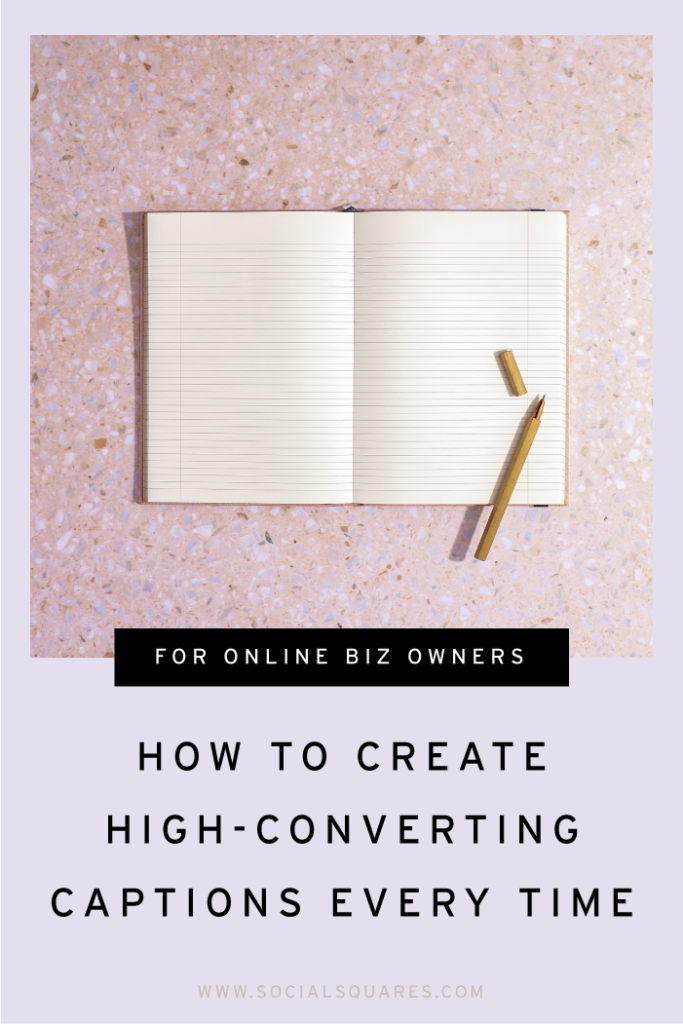
Writing captions is often the least-favorite activity of most business owners. Thinking of content ideas and then translating them into powerful captions isn’t something to be taken lightly– because it can dramatically impact the effectiveness of your posts.

If you spend any time on social media, you’ll notice that some people have this way of bringing you into their content every time– and others don’t.
A powerful image is the FIRST step to capturing your audience’s attention, but images rarely do the selling. It’s not until you get into the nitty gritty of the written word that a transformation actually starts to happen inside of your ideal customer or client. (Thank goodness we have Social Squares to be our backup squad on powerful, beautiful imagery!)

So, let’s go over the step-by-step of what your captions should include:
- The Hook – this is what keeps your audience’s attention after that initial eye-catching image and prompts them to click “read more”
- The Bridge – this is where you connect your hook to the body of the caption
- The Body – this is where all the juicy goodness of your transformation/story happens
- The Transition – this is the section where you move from the body to the call-to-action
- The Call-To-Action: What is the purpose of this post? What do you want your audience to do next? Tell them!
Okay…if that felt like you were back in middle school writing class, that’s not a coincidence. We are often taught this storytelling framework from an early age, but without lots of practice and refinement, the process can get lost along the way.
The good news? You can practice this framework each time you write a caption; like with all things in life, practice makes perfect.
This framework isn’t all you need though. As far as strategizing goes for writing captions, I like to start with the purpose of each post before digging in to the image selection or caption writing. This is how I organize posts by purpose with my clients:
Connect – posts that help your audience connect with you as a person or organization
Inform – product updates, business launches, company announcements
Entertain – funny or interesting content related to your industry/business
Educate – sharing knowledge with your audience
Inspire – prompts your audience to take action
I’ve found that these core “purposes” allow each post to fulfill a need within our audience. (Because everything in our business is about their needs and transformation, after all!) This purpose list is by no means comprehensive, but provides a firm foundation on which to begin creating captions that convert to action within your audience.
Remember: marketing isn’t about throwing spaghetti at the wall to see what sticks– it’s about remaining focused on your goal and strategizing around that goal.
If there’s something certain we know about marketing, it’s that it takes a lot of practice and testing to find what works for you and your audience. I want to assure you though– you WILL get better with consistent practice. Marketing is a marathon, not a sprint.

Comments +
Comments —